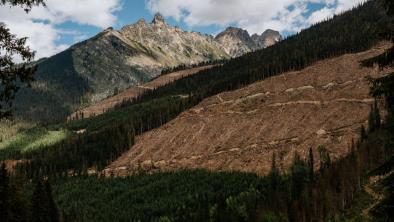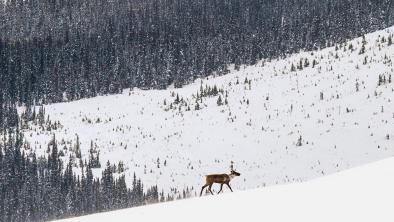Tiny minnow wins big victory for species at risk
Globe & Mail

A court case that focused on the plight of a tiny minnow that lives in only four streams in British Columbia and that rarely ventures more than 50 metres from home has shaken the federal government's strategy for saving endangered species.
In a precedent-setting judgment, the Federal Court has ruled that the Minister of Fisheries and Oceans “acted contrary to law” by approving an endangered species recovery plan that failed to identify critical habitat.
“This is a story about the creation and application of policy by the minister in clear contravention of the law, and a reluctance to be held accountable for failure to follow the law,” Mr. Justice Douglas Campbell said after reviewing how the Species At Risk Act (SARA) was being applied to the Nooksack dace, a fish that averages about 10 centimetres and that is facing extinction.
Judge Campbell said the legal challenge, brought by three environmental organizations, was “absolutely necessary” and that it provided a test case on the minister's interpretation of SARA.
The Georgia Strait Alliance, the Wilderness Committee and the David Suzuki Foundation took the government to court, saying the strategy to save the Nooksack dace was doomed to fail because DFO did not identify habitat crucial to survival of the species.
Judge Campbell agreed, saying critical habitat is mandatory in recovery strategies drafted under SARA.
Gwen Barlee, policy director of Wilderness Committee, said the decision will force dramatic changes in the way governments act to save everything from minnows to whales.
“This homely little fish barely anyone knows about is having tremendous impact,” she said. “This ruling applies not only to Nooksack dace … but it also applies to other endangered species.”
Ms. Barlee continued: “It goes from minnows up to the blue whale. It's an incredibly significant judgment. It's amazing. … It's thrilling. … It's the breakthrough that environmentalists have been waiting for to make the Species At Risk Act actually meaningful.”
Ms. Barlee said DFO in recent years has produced numerous endangered-species recovery strategies that failed to identify critical habitat, even when experts had mapped that habitat.
She said that, although the ruling deals with DFO and SARA, it has implications for provincial governments because it shows crucial habitat must be protected if a recovery plan is to be credible.
Lara Tessaro, the Ecojustice lawyer who handled the application, said DFO must fix at least 17 recovery strategies that fail to identify critical habitat for aquatic species on the West Coast.
“We are putting DFO on formal notice that it has 90 days to rewrite B.C. species recovery strategies that have unlawfully failed to identify critical habitat,” she said.
Scott Cantin, manager of media relations for DFO, said it is too soon to say what the ruling means.
“We are reviewing the decision and that review will help us determine our next steps,” he said.
No minister was named in the judgment. Federal Fisheries Minister Gail Shea was appointed in 2008, the year after the lawsuit was filed.
At the heart of the case was a decision by DFO officials to remove critical-habitat maps prepared by a team of experts who had been drafting a recovery plan.
Biologist Mike Pearson of the consulting firm Pearson Ecological stated in an affidavit that critical habitat had been identified, and protecting it “is the key factor in ensuring the survival of the species.”
After the recovery plan was drafted, DFO officials in 2006 issued a directive stating “that critical habitat should be removed from all RS [Recovery Strategies in the Pacific Region] in process and for the foreseeable future.”
Environmental groups have long asserted the federal government was refusing to identify critical habitat so it wouldn't have to act to protect it.
The Nooksack dace are found in four streams in Canada, all in B.C. Three are part of the Nooksack River basin, from which the fish draws its name. The dace population is estimated at only a few thousand.

